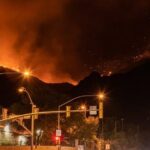Local Public Health Preparedness and Response to Hurricanes and Other Emergencies: High Tech and High Touch
By Umair Shah, MD, MPH, Executive Director and Local Health Authority for Harris County Public Health
This story was published in Ready or Not? 2017.
Harris County, Texas, is a large and rapidly growing community. We are the third largest county in the United States with 4.5 million residents spread over 1,700 square miles.
We are diverse in every sense of the word, making it vital to communicate in culturally competent ways. Additionally, since we are growing and people come from all over, they might not have experience with mosquito or hurricane seasons. We cannot assume our constituents, year after year, are the same. So we must continue to reach out to our community and educate.
That means we need adequate capacity within the department and a diverse team with a broad array of skills and experiences who continual drill and train.
To ensure we reach all our constituents, we are mobile—we take public health to the public. We’ve built health villages with large RV units—that focus on all aspects of health from mosquito abatement to dental services to immunizations.
We didn’t stop there – we knew to be a trusted source during an emergency we must foster a real intimate sense of community.
I mention this because, day-to-day, we rely both on high tech and high touch. We must remember the importance of both. As much as we talk about technology, social media and sophisticated surveillance systems, we cannot lose the high touch of knocking on a door or stopping to share a story, laugh or cry. At the end of the day, the high tech gets the visibility, but it’s the high touch that allows the high tech to succeed.
This is the backdrop that all our preparedness activities take.
Being Prepared
Even preceding Hurricane Katrina, we made sure that every single Harris County Public Health employee had up-to-date Incident Command Systems (ICS) training—and new staffers get this training as part of initiation.
And, every year, we practice—drills, exercises, call down lists, etc.—making sure we can perform all the tasks we’ll need to do during a response.
So, in reality, our response to Hurricane Harvey started more than a decade before the hurricane ever made landfall.
Hurricane Harvey
Before Harvey even hit, our preparedness director alerted staff and the executive team that a major response would be necessary. With this advanced warning, we put all assets in place before landfall.
We set up communications pathways and communicated to all staff, ensuring they were aware of what was coming and their roles and responsibilities.
Once we were in place, we turned to the community. Our communications team sent out messages before the storm about how to be prepared: get your kits ready; what will you do without power; what if you’re displaced; how will you care for the elderly, children and pets; and many more.
Aside from those messages, we needed to make sure people avoided flood water—there could be any number of dangers from power lines to insects to animals to sewage to toxins.
I highlight talking to the public because we’re all in this together. We can respond great from a systems perspective, but if, for instance, people lose access to medications or begin to eat unsafe foods, we could see infectious disease outbreaks or worsened chronic conditions.
In addition to communicating, building and leveraging partnerships is key to a good response.
For example, we worked with state public health and federal partners (the U.S. Air Force) to continue ground and aerial spraying for mosquitos to ensure there wouldn’t be increased levels of Zika or dengue or chikungunya. All levels of government coordinated to ensure we maintained adequate control over mosquitos and other infectious diseases.
Harris County also sheltered a number of people. Our epidemiologists relied on outside experts and volunteers to help them go cot-to-cot to make sure there wasn’t an infectious disease outbreak and that people maintained access to medicines—a high touch strategy.
This is just a small sample of all the activities we did to keep people safe. At the end of the day, a good response involves working across systems to ensure strong partnerships are in place.
Going Forward
I’m always struck by the fact that everyone talks about the importance of health during an emergency, but, when the emergency goes away, we often forget that we need to adequately resource public health agencies so they have the tools and resources to take on the next emergency.
It’s about capacity.
I worry, one day, there will be an emergency that we haven’t trained for enough and don’t have adequate resources in place. Public health can’t all of a sudden be ready to respond to a major emergency – we need to drill and train and have access to infrastructure and technology.
To better prepare for and respond to emergencies, we also must improve technology solutions, electronic surveillance activities, and infrastructure support. We need more epidemiologists and environmental toxicology experts. And, we need more social workers and community health workers to fan into the community and link folks with vital social services.
The best response features a combination of high tech and high touch. This is where our department shines day in and day out. We’ve never let one overtake the other.
Nationally, though, we can’t rest on our laurels—the next storm could be different and we need to be ready and prepared.

